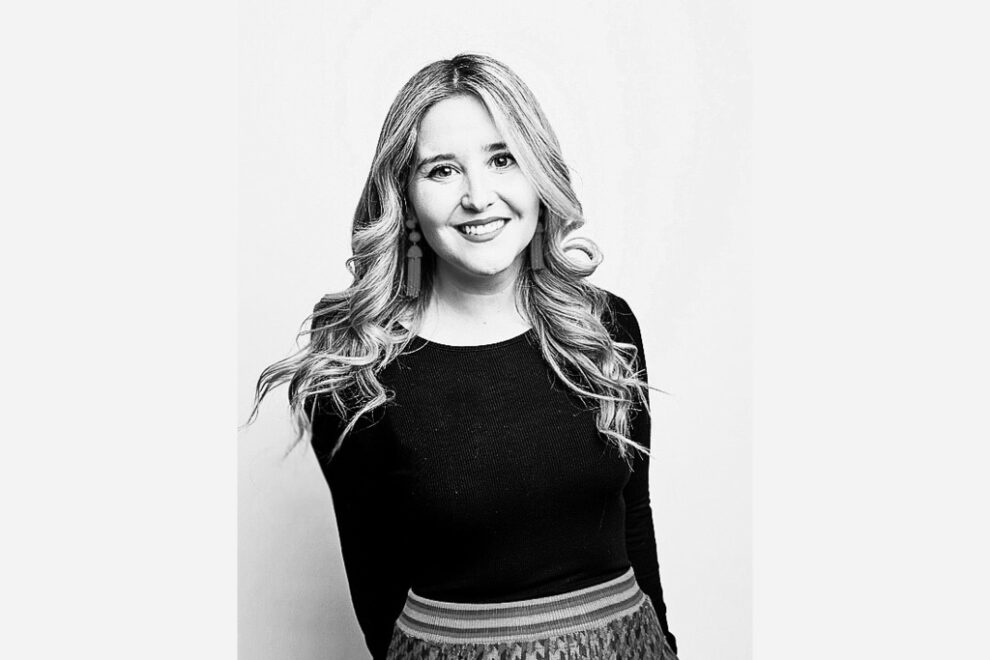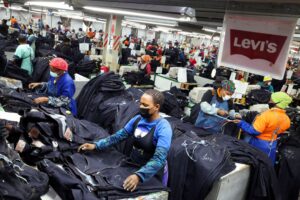
The challenges and promises of augmented reality were explored in a conversation between Carolina Arguelles Navas, global AR product strategy and product marketing lead at Snap Inc., and Adriana Lee, WWD’s technology reporter, at the WWD x FN x Beauty Tech Forum.
The overriding theme was how Snap is trying to make fashion AR more accessible to brands.
“Now obviously we’ve spent the last 10 years trying to grow that consumer behavior with AR and the camera and turn it into a daily behavior,” said Arguelles Navas. She said people are eager for new types of experiences with Snapchat.
She said the biggest shift over the last few years was actually not on the consumer side, but on the business side. “We’ve spent three years talking to so many different types of brands and retailers and merchants and platforms to understand what are the challenges you’re facing. And how can an augmented reality really meet those challenges, but specifically why is it a bit difficult to adopt?” she said.
Three areas come up around quality, craft and making sure that one doesn’t degrade the products that one is actually creating.
“How does that look in AR, and how do you do that in a realistic way?” she said. The second area was around just how hard it is to create the assets and the experiences needed, and how scalable the tools are. The third area is making sure it’s really worth the time and investment, because one is able to reach people at scale and do it across platforms.
In their recent Snap Partner announcement, Snap said they have invested in those three key areas. The first area was about investing in quality, craft and realism. Features like ray tracing are “actually incredibly powerful technology, with brands like Tiffany as launch partners, showcasing the improvements to the technology to show how light and shadows reflect off of these new types of products and 3D assets within the camera,” she said. “And it’s a game changer for jewelry. It’s a game changer for the metallic hardware on handbags, even a game changer for eyewear to improve that realism,” said Arguelles Navas.
Second, Snap launched a huge suite of features to make creation easy by integrating with commerce back end. “So how do we take the images you already have on your retail website and actually translate those in a new, automatic and AI-driven way to actually do apparel try-on at scale without the need to actually develop a 3D model?” she asked. She said the third area of investment is about expanding reach. “So how do we actually help you enable these new technologies for people and shoppers, not just on Snapchat, but actually on your own retail app and website with features like camera kit?” she said.
Discussing the $124 million acquisition of Fit Analytics last year, Arguelles Navas said, “It’s really all around this broader area of how do you help people make confident decisions online when they’re shopping. And one part is visualizing…and ‘what does it look like on me?’ And the second part of that is, ‘is this the right size for me?’”
She said FIT Analytics solution is being integrated into Snap’s broader tech stack for commerce to help bring fit and sizing recommendations in combination with that visualization and AR try-on to really help drive the needle on things like conversions and reducing returns on retail websites.
Talking about AR for sneakers on the platform, Arguelles Navas said, “Sneakers are obviously a category that’s a bit more mature than other ones, like apparel, which is really just starting to find the new types of technologies needed to enable them at scale and quality.”
“Very accurate foot tracking is obviously step one to be able to enable and render a visualization of a 3D model of a shoe on your foot.…But sneakers is really the core vertical use case within that space now just because of how the tracking works.”
She said they’ve seen incredible adoption from partners like Gucci, along with digital fashion companies, who have been leveraging their technology stack for years to be able to bring those experiences to life.
Arguelles Navas said they’re seeing momentum within the foot vertical. She said you have brands like Dior driving a 6.2x return on ad spend by visualizing sneakers on people’s feet, but they’re just getting started with footwear. “We’re already investing in new types of enhancements in AI and machine learning so that we can go into heeled shoes or boots.”
While virtual try-ons are huge for sneakers, as well as beauty and eyewear, for clothing it’s another story.
Talking about cloth simulation and body mesh, Arguelles Navas said, “The apparel vertical is hard for a lot of reasons. On one side, it’s challenging because of the volume of individual items, as well as how fast-moving they are by season. Those two things make 3D model creation very difficult. But on the other part, it’s rendering. How do you actually realistically place this on someone? And there’s a lot of different angles that you need to approach from a technology standpoint.”
She said you need really high-quality body mesh and 3D body tracking to show that silk, for example, isn’t stiff cardboard. “And it should move and flow in this way based on that person’s movements.…And you need to show the sleeve and that needs to wrap around just this part of that person’s body,” she said. “You need things like physics…how would gravity or how would it impact if someone touched that fabric? How would it affect movement? Physics is really incredible to see some of the advancements that we’ve made with our platform. We now can have the ability to have long dangly earrings on and if you actually moved your hand where that 3D object is in the camera, the camera knows how to move the earring as a result,” she said.
Arguelles Navas made the case that virtual apparel try-on matters because it could help consumers feel more confident that they won’t need to return something they bought online.
Personalization is so critical, she said, noting 71 percent of consumers expect a more personal experience.
“This is especially true for Gen Zers who really are looking for that. And again, I think the camera is unlocking such an incredible opportunity to evolve the customer experience at a time where loyalty is actually at an all-time low. How do you change from something that feels just like a feed into something that is almost emotional,” she said.
“And this shift of experience, this shift of being able to go from a feed to a mirror and put that shopper at the center of your brand is really changing the way that businesses are building relationships — even beyond purchase. How can AR be a tool that when someone actually has already purchased your eye shadow palette or your garment and they have it in their closet that they could use the camera to look at it and get exclusive content like tips on how to style and other items that they could style with that garment. Or how how it could be styled differently by season, or for their eye shadow palette, how do I get a step-by-step tutorial on actually how to use it? You’re seeing brands like Estée Lauder invest in those type of tutorials after scanning their palettes, because of the opportunity of solving those problems, those problems around customer experience, lack of loyalty, lack of connection to a business,” she said.
FOR MORE STORIES:
Snapchat’s New Features Target AR-Fueled Fashion Shopping
Snapchat Brings Catalogues to AR Shopping Lenses
Snapchat Dedicates AR Lenses to Every Fashion Week
EXCLUSIVE: Snap and Vogue to Bring Fashion Virtual Try-ons to Cannes






